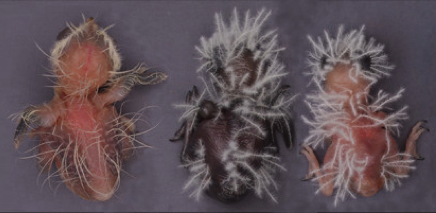OBJECTIVE.
In its December 21, 2015 issue, U.S. scientific journal Current Biology by Keita Tanaka, a specific project research fellow at Rikkyo University's College of Science, and his research team, on the unprecedented discovery of "polymorphism in chick skin coloration" in a cuckoo-host system in New Caledonia.

Avian brood parasites such as cuckoos lay eggs in other birds' nests thereby forcing the hosts to raise alien chicks. By doing so, brood parasites deprive host parents of opportunities to raise their own descendants, which triggers evolution of anti-parasitic defense strategies in the host parents: one such strategy is learning to identify parasitic eggs and remove them from their nests. In response, parasitic offspring will evolve to look exactly like the chicks of the host birds to prevent being rejected from the nest. This evolutionary struggle between the avian brood parasites employing mimicry and the host parents trying to accurately detect parasitic eggs is regarded as a good example of a "coevolutionary arms race."
Some host parents lay eggs that differ widely in appearance, even within the same species (egg polymorphism). Research has shown that polymorphism observed in the eggs of host birds is a result of evolutionary changes in egg appearance to help parents combat avian brood parasites. Tanaka and his colleagues argue that the chick polymorphism they found in the host evolved to escape the cuckoo’s mimicry, which in turn led to imitative polymorphism in cuckoo chicks, too. However, the authors imply that the difference in gene-expression pattern between eggs and chicks could have ignited a further coevolutionary arms race, which is unique in the one at the chick stage.
Some host parents lay eggs that differ widely in appearance, even within the same species (egg polymorphism). Research has shown that polymorphism observed in the eggs of host birds is a result of evolutionary changes in egg appearance to help parents combat avian brood parasites. Tanaka and his colleagues argue that the chick polymorphism they found in the host evolved to escape the cuckoo’s mimicry, which in turn led to imitative polymorphism in cuckoo chicks, too. However, the authors imply that the difference in gene-expression pattern between eggs and chicks could have ignited a further coevolutionary arms race, which is unique in the one at the chick stage.